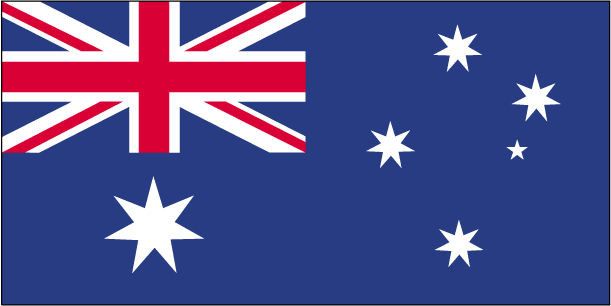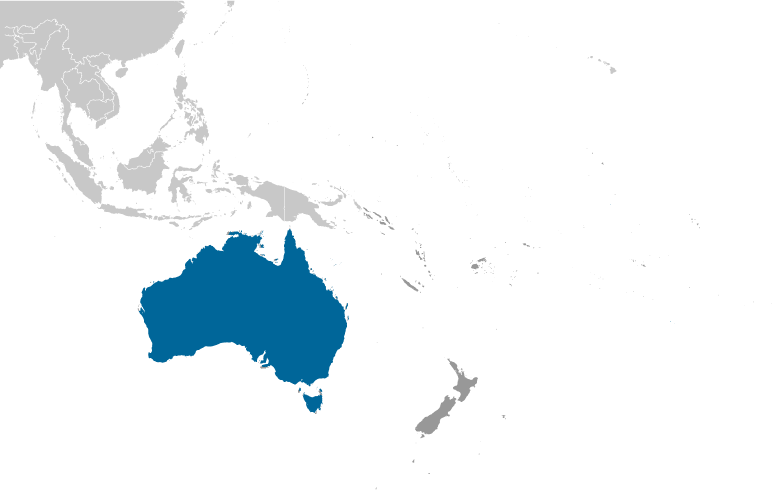
|
|
Advertisements:
EconomyEconomy - overview
Australia's abundant and diverse natural resources attract high levels of foreign investment and include extensive reserves of coal, iron ore, copper, gold, natural gas, uranium, and renewable energy sources. A series of major investments, such as the US$40 billion Gorgon Liquid Natural Gas project, will significantly expand the resources sector. Australia also has a large services sector and is a significant exporter of natural resources, energy, and food. Key tenets of Australia''s trade policy include support for open trade and the successful culmination of the Doha Round of multilateral trade negotiations, particularly for agriculture and services. The Australian economy grew for 17 consecutive years before the global financial crisis. Subsequently, the former RUDD government introduced a fiscal stimulus package worth over US$50 billion to offset the effect of the slowing world economy, while the Reserve Bank of Australia cut interest rates to historic lows. These policies - and continued demand for commodities, especially from China - helped the Australian economy rebound after just one quarter of negative growth. The economy grew by 1.4% during 2009 - the best performance in the OECD - by 2.7% in 2010, and by 1.8% in 2011. Unemployment, originally expected to reach 8-10%, peaked at 5.7% in late 2009 and fell to 5.0% in 2011. As a result of an improved economy, the budget deficit is expected to peak below 4.2% of GDP and the government could return to budget surpluses as early as 2015. Australia was one of the first advanced economies to raise interest rates, with seven rate hikes between October 2009 and November 2010. The GILLARD government is focused on raising Australia''s economic productivity to ensure the sustainability of growth, and continues to manage the symbiotic, but sometimes tense, economic relationship with China. Australia is engaged in the Trans-Pacific Partnership talks and ongoing free trade agreement negotiations with China, Japan, and Korea. Gdp (purchasing power parity) World Ranking: 19
$926.2 billion (2011 est.)
$907.7 billion (2010 est.) $885.2 billion (2009 est.) Note Data are in 2011 US dollars Gdp (official exchange rate)
$1.488 trillion (2011 est.)
Gdp - real growth rate World Ranking: 146
2% (2011 est.)
2.5% (2010 est.) 1.4% (2009 est.) Gdp - per capita (ppp) World Ranking: 22
$40,800 (2011 est.)
$40,400 (2010 est.) $40,000 (2009 est.) Note Data are in 2011 US dollars Gdp - composition by sector
Agriculture 4%
Industry 24.6% Services 71.4% (2011 est.) Labor force World Ranking: 43
12.05 million (2011 est.)
Labor force - by occupation
Agriculture 3.6%
Industry 21.1% Services 75% (2009 est.) Unemployment rate World Ranking: 50
5.1% (2011 est.)
5.2% (2010 est.) Population below poverty line
NA%
Household income or consumption by percentage share
Lowest 10% 2%
Highest 10% 25.4% (1994) Distribution of family income - gini index World Ranking: 113
30.5 (2006)
35.2 (1994) Investment (gross fixed) World Ranking: 34
26.8% of GDP (2011 est.)
Budget
Revenues $473.2 billion
Expenditures $521.8 billion (2011 est.) Taxes and other revenues World Ranking: 82
31.8% of GDP (2011 est.)
Budget surplus (+) or deficit (-) World Ranking: 106
-3.3% of GDP (2011 est.)
Public debt World Ranking: 113
26.8% of GDP (2011 est.)
23.5% of GDP (2010 est.) Inflation rate (consumer prices) World Ranking: 71
3.4% (2011 est.)
2.8% (2010 est.) Central bank discount rate World Ranking: 99
4.35% (31 December 2010 est.)
3.28% (31 December 2009 est.) Note This is the Reserve Bank of Australia's "cash rate target," or policy rate Commercial bank prime lending rate World Ranking: 131
7.74% (31 December 2011 est.)
7.279% (31 December 2010 est.) Stock of narrow money World Ranking: 10
$492.2 billion (31 December 2011 est.) $421.7 billion (31 December 2010 est.) Stock of broad money World Ranking: 12
$1.502 trillion (31 December 2011 est.) $1.392 trillion (31 December 2010 est.) Stock of domestic credit World Ranking: 13
$2.08 trillion (31 December 2011 est.) $1.927 trillion (31 December 2010 est.) Market value of publicly traded shares World Ranking: 11
$1.198 trillion (31 December 2011) $1.455 trillion (31 December 2010) $1.258 trillion (31 December 2009) Agriculture - products
Wheat, barley, sugarcane, fruits; cattle, sheep, poultry Industries
Mining, industrial and transportation equipment, food processing, chemicals, steel Industrial production growth rate World Ranking: 148
-0.1% (2011 est.)
Electricity - production World Ranking: 16
232 billion kWh (2009 est.)
Electricity - consumption World Ranking: 15
225.4 billion kWh (2008 est.)
Electricity - exports
0 kWh (2009 est.)
Electricity - imports
0 kWh (2009 est.)
Oil - production World Ranking: 30
549,200 bbl/day (2010 est.)
Oil - consumption World Ranking: 23
960,800 bbl/day (2010 est.)
Oil - exports World Ranking: 40
312,600 bbl/day (2009 est.)
Oil - imports World Ranking: 19
731,400 bbl/day (2009 est.)
Oil - proved reserves World Ranking: 29
3.318 billion bbl (1 January 2011 est.) Natural gas - production World Ranking: 20
45.11 billion cu m (2010 est.)
Natural gas - consumption World Ranking: 29
26.41 billion cu m (2010 est.)
Natural gas - exports World Ranking: 11
24.7 billion cu m (2010 est.)
Natural gas - imports World Ranking: 30
5.99 billion cu m (2010 est.)
Natural gas - proved reserves World Ranking: 12
3.115 trillion cu m (1 January 2011 est.) Current account balance World Ranking: 183
-$40.5 billion (2011 est.)
-$31.99 billion (2010 est.) Exports World Ranking: 22
$272.1 billion (2011 est.)
$212.9 billion (2010 est.) Exports - commodities
Coal, iron ore, gold, meat, wool, alumina, wheat, machinery and transport equipment Exports - partners
China 27.4%, Japan 19.2%, South Korea 8.9%, India 5.8% (2011) Imports World Ranking: 21
$243.4 billion (2011 est.)
$194.7 billion (2010 est.) Imports - commodities
Machinery and transport equipment, computers and office machines, telecommunication equipment and parts; crude oil and petroleum products Imports - partners
China 18.5%, US 11.4%, Japan 7.9%, Singapore 6.3%, Germany 4.7% (2011) Reserves of foreign exchange and gold World Ranking: 42
$46.8 billion (31 December 2011 est.) $42.27 billion (31 December 2010 est.) Debt - external World Ranking: 13
$1.376 trillion (31 December 2011 est.) $1.266 trillion (31 December 2010 est.) Stock of direct foreign investment - at home World Ranking: 12
$549.1 billion (31 December 2011 est.) $514.4 billion (31 December 2010 est.) Stock of direct foreign investment - abroad World Ranking: 13
$443.5 billion (31 December 2011 est.) $400.7 billion (31 December 2010 est.) Exchange rates
Australian dollars (AUD) per US dollar - 0.9695 (2011 est.)1.0902 (2010) 1.2822 (2009) 1.2059 (2008) 1.2137 (2007) Fiscal year
1 July - 30 June
Comments
Add a new comment: |
Advertisement
Members area
Australia (Canberra):
 
GPS points from Australia (Canberra)
|
||||||||

 Aboriginal settlers arrived on the continent from Southeast Asia about 40,000 years before the first Europeans began exploration in the 17th century. No formal territorial claims were made until 1770, when Capt. James COOK took possession of the east coast in the name of Great Britain (all of Australia was claimed as British territory in 1829 with the creation of the colony of Western Australia). Six colonies were created in the late 18th and 19th centuries; they federated and became the Commonwealth of Australia in 1901. The new country took advantage of its natural resources to rapidly develop agricultural and manufacturing industries and to make a major contribution to the British effort in World Wars I and II. In recent decades, Australia has transformed itself into an internationally competitive, advanced market economy. It boasted one of the OECD's fastest growing economies during the 1990s, a performance due in large part to economic reforms adopted in the 1980s. Long-term concerns include ageing of the population, pressure on infrastructure, and environmental issues such as frequent droughts.
Aboriginal settlers arrived on the continent from Southeast Asia about 40,000 years before the first Europeans began exploration in the 17th century. No formal territorial claims were made until 1770, when Capt. James COOK took possession of the east coast in the name of Great Britain (all of Australia was claimed as British territory in 1829 with the creation of the colony of Western Australia). Six colonies were created in the late 18th and 19th centuries; they federated and became the Commonwealth of Australia in 1901. The new country took advantage of its natural resources to rapidly develop agricultural and manufacturing industries and to make a major contribution to the British effort in World Wars I and II. In recent decades, Australia has transformed itself into an internationally competitive, advanced market economy. It boasted one of the OECD's fastest growing economies during the 1990s, a performance due in large part to economic reforms adopted in the 1980s. Long-term concerns include ageing of the population, pressure on infrastructure, and environmental issues such as frequent droughts.